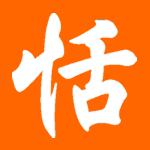to: tiangotlost@gmail.com
date: Tue, Apr 19, 2011 at 9:11 PM
subject: please help me asap
so my boyfriend got this tattoo the other day and was told it ment loyalty in japanese kanji and just so happens my friend has loyalty also in jap kanji and they dont look anything alike please helppppp me asap

I sure hope Roxanne's boyfriend really enjoys eating noodles.
麺 [めん] noodles


There's nothing you can do either, can't add another character to make different meaning, create an idiom or anything, it's just...... noodles or noodle-related words. lol.
ReplyDeleteI guess he could modify it to ramen. Maybe he ate a lot of that when he was in college. 24 packages for $0.99.
ReplyDeleteGood idea about turning it into "ramen" but there's a hitch. Ramen is usually written in Japanese as ラーメン in katakana. I'm sure there's a way to write it in kanji but not all Japanese people can read it, and I had to look it up myself. I guess it is most likely 拉麺, but it could also be 老麺 or 柳麺. The name of the original Chinese dish seems to be a bit obscure and lost in the sands of time.
ReplyDeleteYeah, if I were the person in the pic I'd just go all out and add 拉.
ReplyDeleteAdd something to mean "I ♥ noodles". It'd be funny at least.
ReplyDelete@Alan Siegrist: 拉麺 (拉面 in simplified) is delicious and most certainly not lost in the sands of time!
ReplyDelete@ Alan:
ReplyDeleteRamen = taken from Chinese la mian / Lai meen, in Cantonese. And so it became ラーメン, ramen in Japanese.
拉麺: 麺 itself is already a simplification. 面 is "culinary/waiter's usage in writing 麺" based on the pronunciation of "麺" into "面"=using the same pronuncation with a simpler word with less strokes. 面 = "face", used more in non-Mandarin dialects, where 臉 is a new coinage, simplified in China as "脸", which is a simplification based on grass script, and not the standard script and should therefore not be used as a standard. since ancient times, not noodles in Chinese. The original writing of 麺 = 麪
In other words: 麪[丏 = "mian" in Mandarin] > 麫 [丐 = "gai" in Mandarin] > 麵 > 面. So according to analysis: 麪 is correct with the phonetic as 丏, all the rest could be considered incorrect or inaccurate.
@longboatgirl
ReplyDeleteI think Alan is referring 拉麺 specifically regarding how its believed to be the origin for term ramen in Japan. With respect to that usage, the the original chinese dish that was the precursor to ramen has indeed been lost to time.
Anyway, today you sometimes see ramen written in kanji in Japan as either ら麺 or らー麺, and also as 中華そば or 支那そば, but none are composed entirely of kanji.